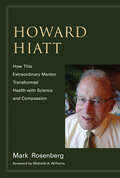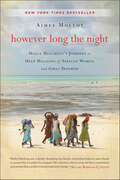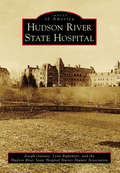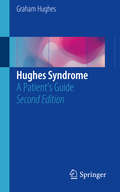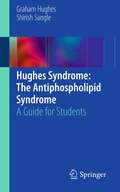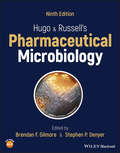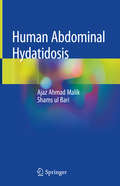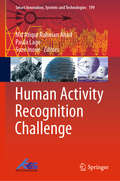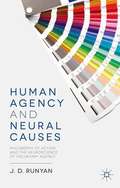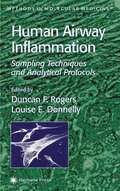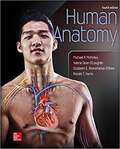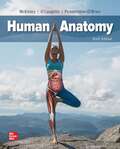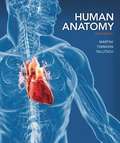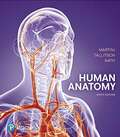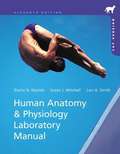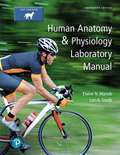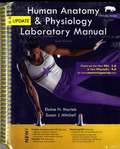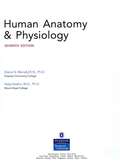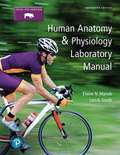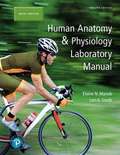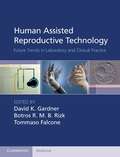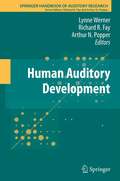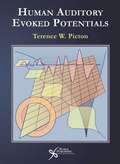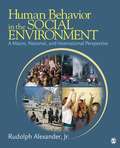- Table View
- List View
Howard Hiatt: How This Extraordinary Mentor Transformed Health with Science and Compassion (The\mit Press Ser.)
by Mark RosenbergThe seven-decade career of Howard Hiatt, a pioneer in public health, advocate for global health and health equity, a mentor to generations of healthcare leaders.Howard Hiatt—physician, scientist, advocate for global health, and mentor to generations of healthcare leaders—has spent much of his seven-decade career being ahead of his time. His innovative ideas as head of Harvard's School of Public Health from 1972 to 1984—about preventive medicine, the incorporation of cutting-edge science into the curriculum, and cross-disciplinary collaboration—met fierce resistance at the time but are now widely recognized building blocks of public health. Hiatt's interest in global health and health equity equipped him to advocate for a series of younger physicians and researchers, including Paul Farmer and Jim Kim, two founders of Partners in Health, and the prominent health policy expert Don Berwick. This book tells the story of Hiatt's life and work, with important lessons for today drawn from Hiatt's 92 years of experience.Hiatt, born in 1925, attended Harvard College and received an M.D. degree from Harvard Medical School. Before he headed the School of Public Health, he was a modernizing force as chief of medicine at Boston's Beth Israel Hospital. After his stormy tenure at SPH, he went to Brigham and Women's as a professor of medicine and a senior physician with a portfolio of his own devising. It was at the Brigham that Hiatt took on the role of mentor, influencing generations of physicians and staking out new territory in the fields of global health and clinical effectiveness. He is still active at 92 as teacher and mentor.
However Long the Night: Molly Melching's Journey to Help Millions of African Women and Girls Triumph
by Aimee MolloyIn However Long the Night, Aimee Molloy tells the unlikely and inspiring story of Molly Melching, an American woman whose experience as an exchange student in Senegal led her to found Tostan and dedicate almost four decades of her life to the girls and women of Africa.This moving biography details Melching's beginnings at the University of Dakar and follows her journey of 40 years in Africa, where she became a social entrepreneur and one of humanity's strongest voices for the rights of girls and women.Inspirational and beautifully written, However Long the Night: Molly Melching's Journey to Help Millions of African Women and Girls Triumph is a passionate entreaty for all global citizens. This book is published in partnership with the Skoll Foundation, dedicated to accelerating innovations from organizations like Tostan that address the world's most pressing problems.
Hudson River State Hospital (Images of America)
by Joseph Galante Lynn Rightmyer the Hudson River State Hospital Nurses Alumni AssociationFor 141 years, Hudson River State Hospital was home to tens of thousands of individuals suffering from mental illness. The facility grew from a 208-acre parcel in 1871 with seven patients to 752 acres with five dozen separate buildings containing nearly 6,000 patients in 1954. The main building was constructed on a Kirkbride plan, a treating philosophy centered around an ornate building of equal proportions staffed by employees who integrated dignity and compassion into health care. Famous architects Frederick Clark Withers and Calvert Vaux drafted the main building in 1869. The landscape was penned by Frederick Law Olmstead, perhaps best known for the design of New York City's Central Park.
Hughes Syndrome
by Graham HughesThis second edition is a result from a worldwide surge of interest in antiphospholipid syndrome. This disease, also known as Hughes Syndrome, affects all organs of the body including the placenta, and therefore touches all areas of medicine. Many publications have shown that APS causes miscarriage, strokes, heart attacks and teenage epilepsy. This new edition will see many of the illustrations updated as well as an increase in the number of figures within the chapters, to help the reader understand and treat this disease. It aims to help patients with Hughes Syndrome and their families, as well as trainee doctors , GPs, nurses and midwives.
Hughes Syndrome: Highways and Byways
by Graham Hughes Munther A KhamashtaHughes Syndrome: Highways and Byways is a handy and easy-to-read guide to the main features of Hughes syndrome. There has been worldwide interest in this 'new' syndrome (first described in 1983). A clotting tendency which can potentially affect any organ in the body, it is: * responsible for 1 in 5 recurrent miscarriages (now successfully treated with aspirin and heparin) * responsible for 1 in 5 young (under 45) strokes * a major cause of early heart attacks * responsible for 1 in 5 deep vein thromboses * an important cause of migraine. Hughes Syndrome: Highways and Byways is a valuable resource for professionals with an interest in the subject, as well as general practitioners and patients.
Hughes Syndrome: The Antiphospholipid Syndrome
by Graham Hughes Shirish SangleHughes Syndrome: The Antiphospholipid Syndrome, A Guide for Students provides an in-depth analysis into the main effects of Hughes Syndrome. In 1983, Dr Graham Hughes, and his team in London, described a syndrome and subsequently developed simple blood tests to diagnose the condition. This syndrome is characterised by thrombosis (both in limbs and internal organs), headaches, memory loss, strokes and, in pregnant women, placental clotting and recurrent miscarriage. The syndrome, now known worldwide as Hughes Syndrome, or the Antiphospholipid Syndrome, is common - being responsible for example, for up to 1 in 5 cases of young stroke and more importantly, it is treatable. Hughes Syndrome: The Antiphospholipid Syndrome, A Guide for Students details the effects of Hughes Syndrome on the major organs, making it a valuable reference tool for students in training.
Hugo and Russell's Pharmaceutical Microbiology
by Brendan F. Gilmore Stephen P. DenyerHugo & Russell’s Pharmaceutical Microbiology Discover the very latest developments in pharmaceutical microbiology in the 9th edition of this popular textbook Microbiology is one of the essential pharmaceutical sciences upon which the study and practice of pharmacy is built. It has a bearing on all aspects of the manufacture of medicines and sterile products, from their design and development to their delivery as quality products. Few interventions are more central to modern medicine than the treatment of infection, where antibiosis, vaccination and hygienic practices have essential roles to play. The COVID-19 pandemic, the appearance of new pathogens and the rise of antibiotic resistance have demonstrated most completely the need for pharmaceutical practitioners, researchers and industrial scientists to be fully conversant with this field. The 9th edition of Hugo and Russell’s Pharmaceutical Microbiology has been updated to meet this need. Having long served as the sole comprehensive textbook covering this subject, it has now been adapted to a critical new period in the advancement of medical and pharmaceutical research and development. Its experienced editors have incorporated contributions from subject experts and created a text which will serve the next generation of pharmacy students, pharmaceutical industry scientists and researchers. In this ninth edition of Hugo and Russell’s Pharmaceutical Microbiology, readers will find: A mix of established and new authors bringing practical and research experience to their chapters Material covering the fundamentals of microbiology, microbial behavior and laboratory investigation Revised chapters incorporating new material on microbe-host interactions, antibiotic resistance, emerging pathogens, public health microbiology, healthcare-associated infection and pharmaceutical manufacture Emerging understandings from the COVID-19 pandemic on infection prevention and control and vaccine development Practitioners providing their insights on clinical practice and pharmaceutical production An accompanying website incorporating teaching resources Hugo and Russell’s Pharmaceutical Microbiology, 9th edition promises to remain the essential text for pharmacy and medical students, as well as researchers and industry professionals.
Human Abdominal Hydatidosis
by Ajaz Ahmad Malik Shams Ul BariThe book explores various aspects of hydatid disease, including the background, parasitology, epidemiology, etiology, pathogenesis and presentation in humans. It features dedicated chapters on hydatidosis of liver, spleen, peritoneum, kidney, pelvis, and disseminated hydatid disease, and also provides detailed information on the latest surgical and non-surgical methods for treating the condition, such as drug therapy and laproscopic management. The book is primarily intended for undergraduate and postgraduate students of surgery and medicine, but is also useful to veterinary science students and pharmaceutical companies. Further, it serves as a valuable reference resource for academics and researchers in associated fields.
Human Activity Recognition Challenge (Smart Innovation, Systems and Technologies #199)
by Sozo Inoue Md Atiqur Rahman Ahad Paula LagoThe book introduces some challenging methods and solutions to solve the human activity recognition challenge. This book highlights the challenge that will lead the researchers in academia and industry to move further related to human activity recognition and behavior analysis, concentrating on cooking challenge. Current activity recognition systems focus on recognizing either the complex label (macro-activity) or the small steps (micro-activities) but their combined recognition is critical for analysis like the challenge proposed in this book. It has 10 chapters from 13 institutes and 8 countries (Japan, USA, Switzerland, France, Slovenia, China, Bangladesh, and Columbia).
Human Agency and Neural Causes: Philosophy of Action and the Neuroscience of Voluntary Agency
by J. D. RunyanHuman Agency and Neural Causes provides an analysis of our everyday thought about our conduct, and the neuroscience research concerning voluntary agency. J.D. Runyan argues that our findings through neuroscience are consistent with what would be expected if we are, in fact, voluntary agents.
Human Airway Inflammation
by Louise E. Donnelly Duncan F. RogersThis book offers a wide range of readily reproducible methods for sampling, isolating, and culturing all of the major inflammatory cells involved in the pathophysiology of asthma and COPD. The collection of techniques detailed here involve biopsy and sampling of airway liquids such as sputum and exhaled gases such as nitric oxide. Also provided is a full range of methods for the isolation and characterization of cells and for the measurement of the major inflammatory markers, along with protocols for measuring many of the inflammatory mediators and enzymes released during lung inflammation. Among the more advanced techniques are the measurement of exhaled hydrocarbons and F2 isoprostanes, granulocyte pharmacodynamics in whole blood measured by flow cytometry, and tracing mediator trafficking in eosinophils using confocal microscopy. Comprehensive and highly practical, the methods presented in Human Airway Inflammation: Sampling Techniques and Analytical Protocols provide today's basic and clinical researchers all the major techniques for investigating airway inflammation, and powerfully illuminate many novel targets for emerging drugs.
Human Anatomy
by Valerie O'Loughlin Michael McKinley Ronald Harris Elizabeth Pennefather-O'BrienWith its unrivaled art program and accessible writing style, McKinley et al.'s Human Anatomy stands apart from other anatomy texts. High-quality photographs paired with brilliantly rendered illustrations help students visualize, understand, and appreciate the wonders of human anatomy. <p><p> The author team incorporates their over seventy years of teaching experience into student-friendly Learning Strategies, Clinical View boxes, and progressive question sets that motivate students to internalize and apply what they've learned. Users who purchase Connect Plus receive access to the full online eBook version of the textbook, as well full access to LearnSmart, SmartBook, and Anatomy & Physiology Ӏ REVEALED.
Human Anatomy
by Valerie O'Loughlin Michael McKinley Elizabeth Pennefather-O'BrienHuman Anatomy stands apart from other texts as it guides students on a clearly written and expertly illustrated beginner’s path through the human body. High-quality photographs paired with brilliantly rendered illustrations help students visualize, understand, and appreciate the wonders of human anatomy. The author team incorporates their combined 70 years of teaching experience into student-friendly learning strategies, built around a pedagogical framework designed to foster retention and encourage the application of knowledge and understanding.
Human Anatomy
by Frederic H. Martini Michael J. Timmons Robert B. TallitschThe Eighth Edition includes new one- and two-page Spotlight Figures that seamlessly integrate text and visuals to guide students through complex topics. This program presents a better teaching and learning experience.
Human Anatomy
by Inc. Frederic H. Martini Robert B. Tallitsch Judi NathFor courses in one-semester human anatomy. <p><p> A fresh voice strengthens a visually compelling, classic human anatomy text. <p> Revered for its groundbreaking, atlas-style format, detailed illustrations, and exceptionally clear photographs, Human Anatomy has long been known for its quality and sophistication, as well as its scope and level of coverage. Accomplished author and award-winning educator Judi Nath joins the writing team, bringing a fresh voice, enhanced accuracy, and a clear, engaging writing style to the 9th Edition. <p><p> The new edition builds upon the legacy of previous editions and includes expanded clinical content to help students focus on the types of diseases and injuries they are likely to encounter in their future careers; visually stunning Spotlight Figures in every chapter to guide students through complex topics; and new features that focus students on the key point in each section and use simple analogies and memory devices to help students remember facts and concepts.
Human Anatomy & Physiology Laboratory Manual: Cat Version
by Elaine N. Marieb Susan J. Mitchell Lori A. SmithThis lab manual gives students a complete hands-on laboratory and learning experience inside and outside of the lab. The new edition has been fully revised with even more accessible language and more than 50 new and improved cadaver and histology photos. It also features engaging new Group Challenge activities that encourage a more active learning experience in the lab.
Human Anatomy & Physiology Laboratory Manual: Cat Version
by Elaine N. Marieb R. N. Lori A. SmithHuman Anatomy & Physiology Laboratory Manual helps students and instructors manage time inside and outside of the A&P lab classroom and works hand-in-hand with Mastering A&P. The 13th Edition features dozens of new in the review sheets, as well as revamped clinical application questions and critical thinking questions. Encourage students to prepare for lab activities, including Building Vocabulary Coaching Activities, exercise review sheet assessment questions, art labeling activities, mobile-ready Practice Anatomy Lab(tm) 3.1 with customizable flashcards, and more.
Human Anatomy & Physiology Laboratory Manual: Fetal Pig Version 10th Edition update
by Elaine N. Marieb Susan J. MitchellThis manual, intended for students in introductory human anatomy and physiology courses, presents a wide range of laboratory experiences.It also contains the background discussions and terminology necessary to perform all experiments.
Human Anatomy And Physiology
by Katja Hoehn Elaine MariebThe top seed anatomy and physiology text book serves up another ace edition
Human Anatomy And Physiology Laboratory Manual, Fetal Pig Version
by Lori Smith Elaine MariebThe philosophy behind the revision of this manual mirrors that of all earlier editions. It reflects a still developing sensibility for the way teachers teach and students learn, informed by years of teaching the subject and by collecting suggestions from other instructors as well as from students enrolled in multifaceted healthcare programs. Human Anatomy & Physiology Laboratory Manual was originally developed to facilitate and enrich the laboratory experience for both teachers and students. This edition retains those same goals. This manual, intended for students in introductory human anatomy and physiology courses, presents a wide range of laboratory experiences for students concentrating in nursing, physical therapy, pharmacology, respiratory therapy, and exercise science, as well as biology and premedical programs. The manual's coverage is intentionally broad, allowing it to serve both one- and two-semester courses, and it is available in versions that contain detailed guidelines for dissecting a cat or fetal pig laboratory specimen.
Human Anatomy and Physiology Laboratory Manual, Main Version
by Elaine N. Marieb Lori A. SmithFor the two-semester A&P laboratory course. Help manage time and improve learning inside and outside of the lab The #1 best-selling Human Anatomy & Physiology Laboratory Manual helps students and instructors manage time inside and outside of the A&P lab classroom and works hand-in-hand with Mastering A&P, the leading online homework and learning program for A&P. The 13th Edition features dozens of new, full-color figures and photos in the review sheets, as well as revamped clinical application questions and critical thinking questions that reinforce the most important concepts from lab. <P><P>Encourage students to prepare for lab by assigning recommended Mastering A&P activities for each lab exercise, including 18 pre-lab videos (8 are new to this edition), Building Vocabulary Coaching Activities, exercise review sheet assessment questions, art labeling activities, mobile-ready Practice Anatomy Lab™ 3.1 with customizable flashcards, and more. Thousands of assignment options in the Item Library are closely correlated with the print edition of the manual, making it easier than ever to create homework assignments that are aligned with your lab activities.
Human Assisted Reproductive Technology
by David K. Gardner Tommaso Falcone Botros R. RizkHuman Assisted Reproductive Technology: Future Trends in Laboratory and Clinical Practice offers a collection of concise, practical review articles on cutting-edge topics within reproductive medicine. Each article presents a balanced view of clinically relevant information and looks ahead to how practice will change over the next five years. The clinical section discusses advances in reproductive surgery and current use of robotic surgery for tubal reversal and removal of fibroids. It looks into the refinement of surgical procedures for fertility preservation purposes. Chapters also discuss non-invasive diagnosis of endometriosis with proteomics technology, new concepts in ovarian stimulation and in the management of polycystic ovary syndrome, and evidence-based ART. The embryology section discusses issues ranging from three-dimensional in-vitro ovarian follicle culture, and morphometric and proteomics analysis of embryos, to oocyte and embryo cyropreservation. This forward-looking volume of review articles is key reading for reproductive medicine physicians, gynecologists, reproductive endocrinologists, urologists and andrologists.
Human Auditory Development
by Arthur N. Popper Richard R. Fay Lynne WernerThis volume will provide an important contemporary reference on hearing development and will lead to new ways of thinking about hearing in children and about remediation for children with hearing loss. Much of the material in this volume will document that a different model of hearing is needed to understand hearing during development. The book is expected to spur research in auditory development and in its application to pediatric audiology.
Human Auditory Evoked Potentials
by Terence W. PictonThis book reviews how we can record the human brains response to sounds, and how we can use these recordings to assess hearing. These recordings are used in many different clinical situations the identification of hearing impairment in newborn infants, the detection of tumors on the auditory nerve, the diagnosis of multiple sclerosis. As well they are used to investigate how the brain is able to hear how we can attend to particular conversations at a cocktail party and ignore others, how we learn to understand the language we are exposed to, why we have difficulty hearing when we grow old. This book is written by a single author with wide experience in all aspects of these recordings. The content is complete in terms of the essentials. The style is clear equations are absent and figures are multiple. The intent of the book is to entertain as much as to teach allusions are made to fields beyond the ear and the chapters discuss the importance of the phenomena as well as describing their nature.
Human Behavior In The Social Environment: A Macro, National, And International Perspective
by Rudolph AlexanderHuman Behavior and the Social Environment: A Macro, National, and International Perspective is a textbook for one of the primary courses in the social work curriculum titled Human Behavior in the Social Environment. The course is offered usually over two semesters, with one focusing on micro issues (how the individual develops in relation to their social enviroment on an individual, family, and group level). The second section of the course typically focuses on macro issues pertaining to how an individual is shaped by their social environment by macro issues including social institutions, community, and the government. This book is intended for the second sequence of the course. It takes a unique approach by incorporating international issues of globalization, which has been an emerging issue in social work. Although it takes this unique perspective, it still covers the basics of macro social work on a national level. Other important areas that are not well represented in competing texts includes coverage of rural issues, the impact of hurricane Katrina on social and community resources, human rights and social justice, the increasing impact of increasing rates of incarceration, and a special section focusing on crisis theory. This book has a number of key selling points. They include: A broad national and international perspective A timely approach that examines issues such as rural communities, the impact of disaster on communities, and increasing incarceration rates Provides special emphasis on human needs and social justice End of chapter discussion questions A student glossary Chapter opening photos An appendix that includes three additonal higher level macro theories which would make the book applicable to Master's level program This book will also contain a number of features that are essential for any book to be adopted in a HBSE course. They include: End of chapter discussion questions Instructor's manual featuring powerpoint slides and a test bank Student study site for recommended reading, chapter summaries, and flash cards
